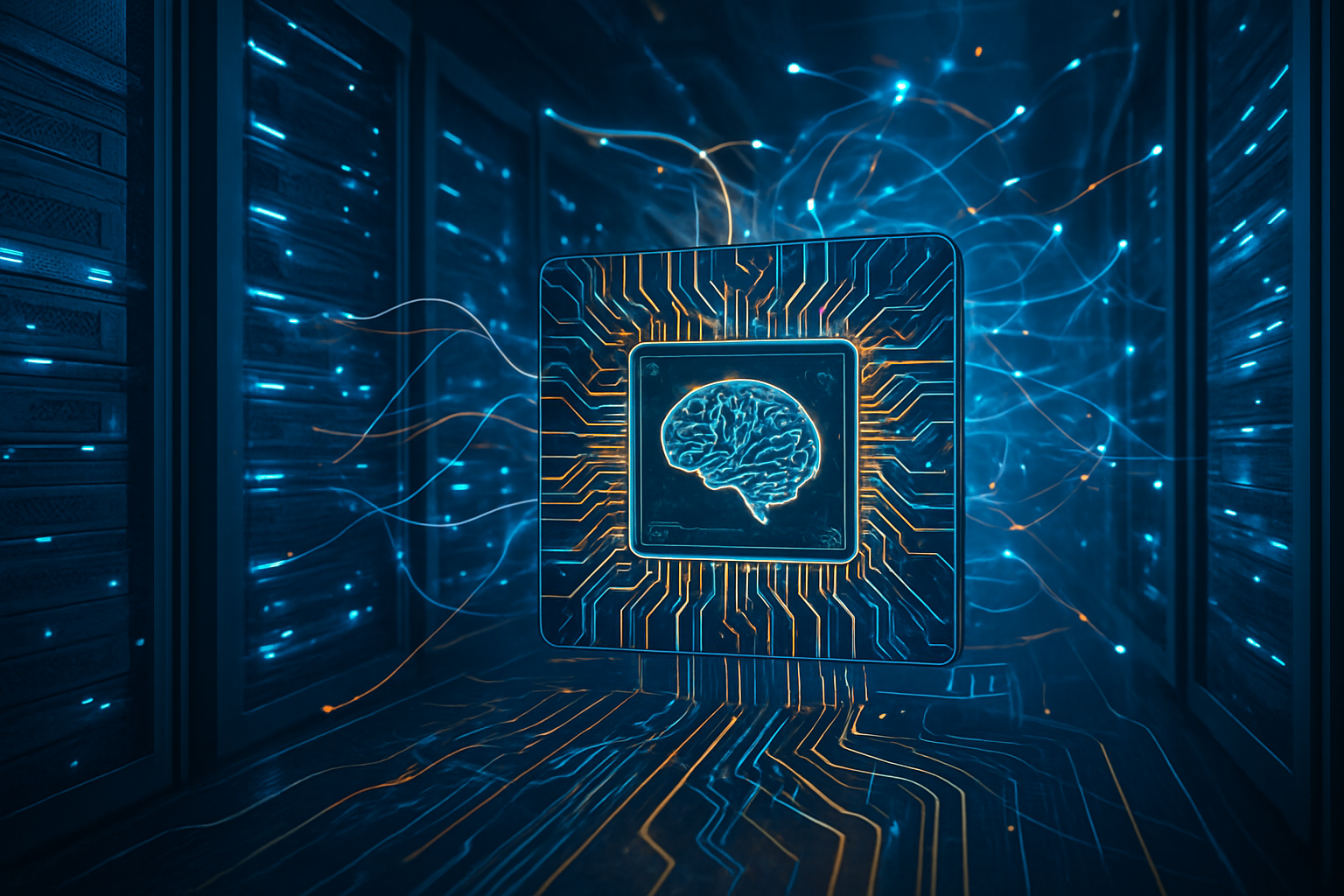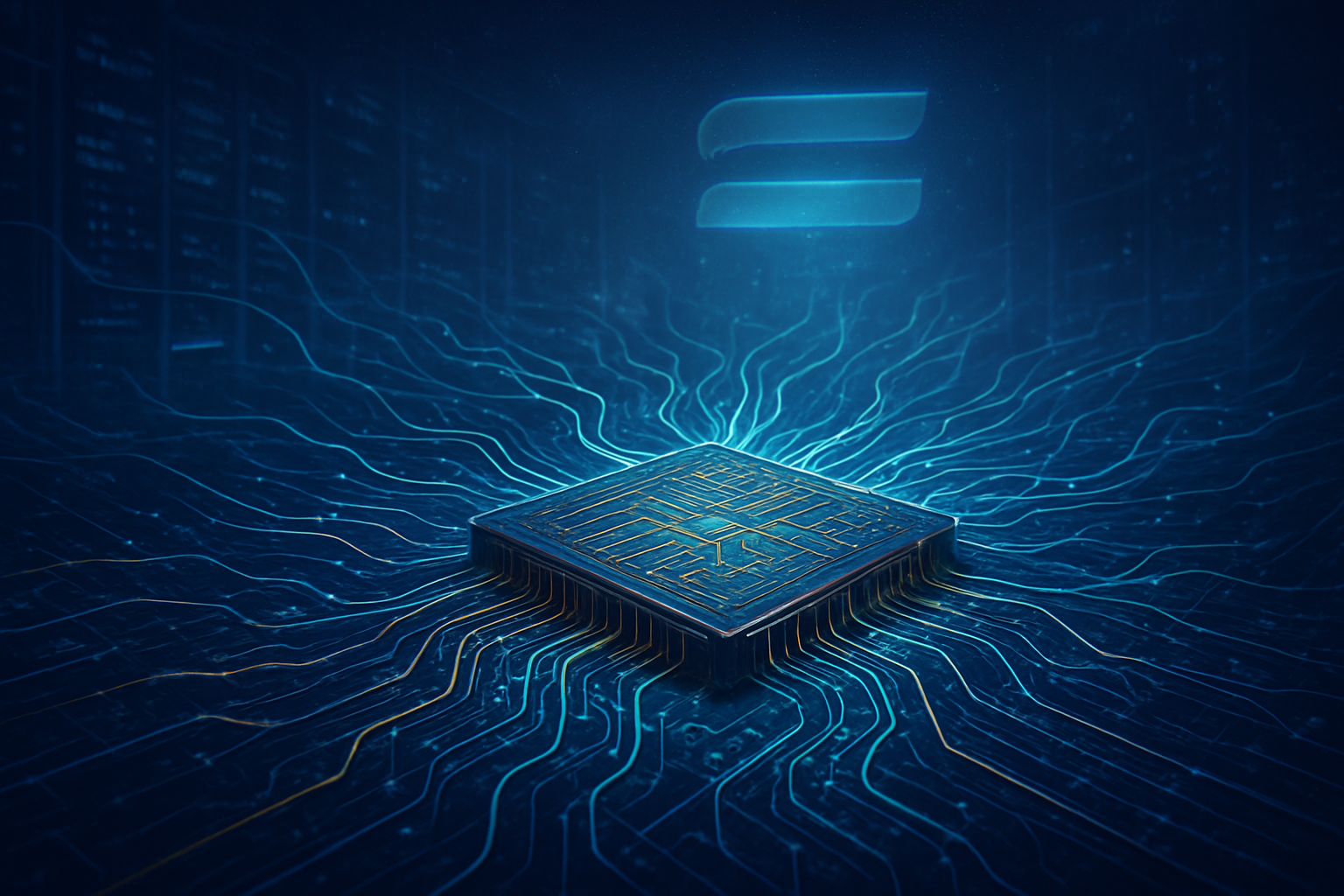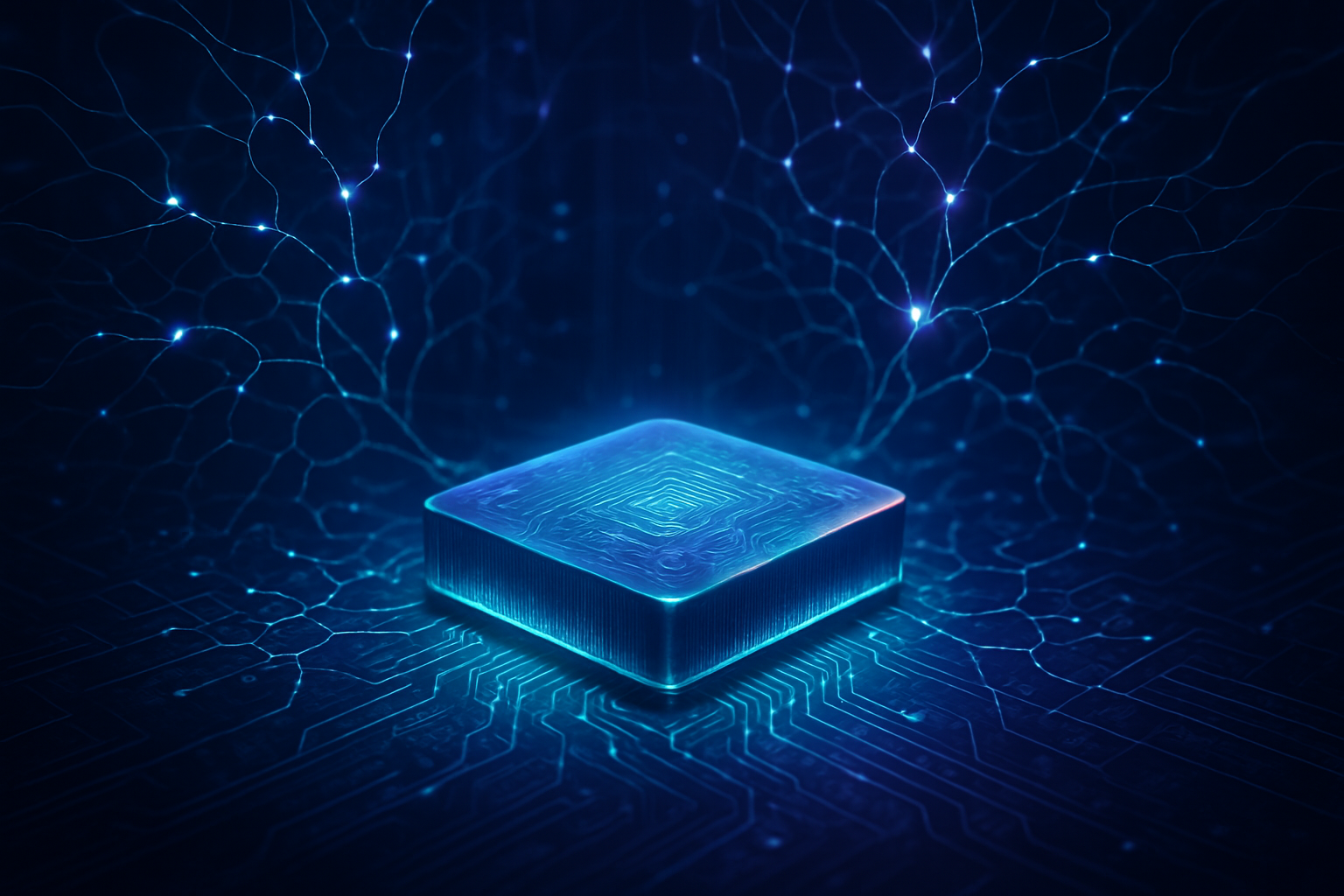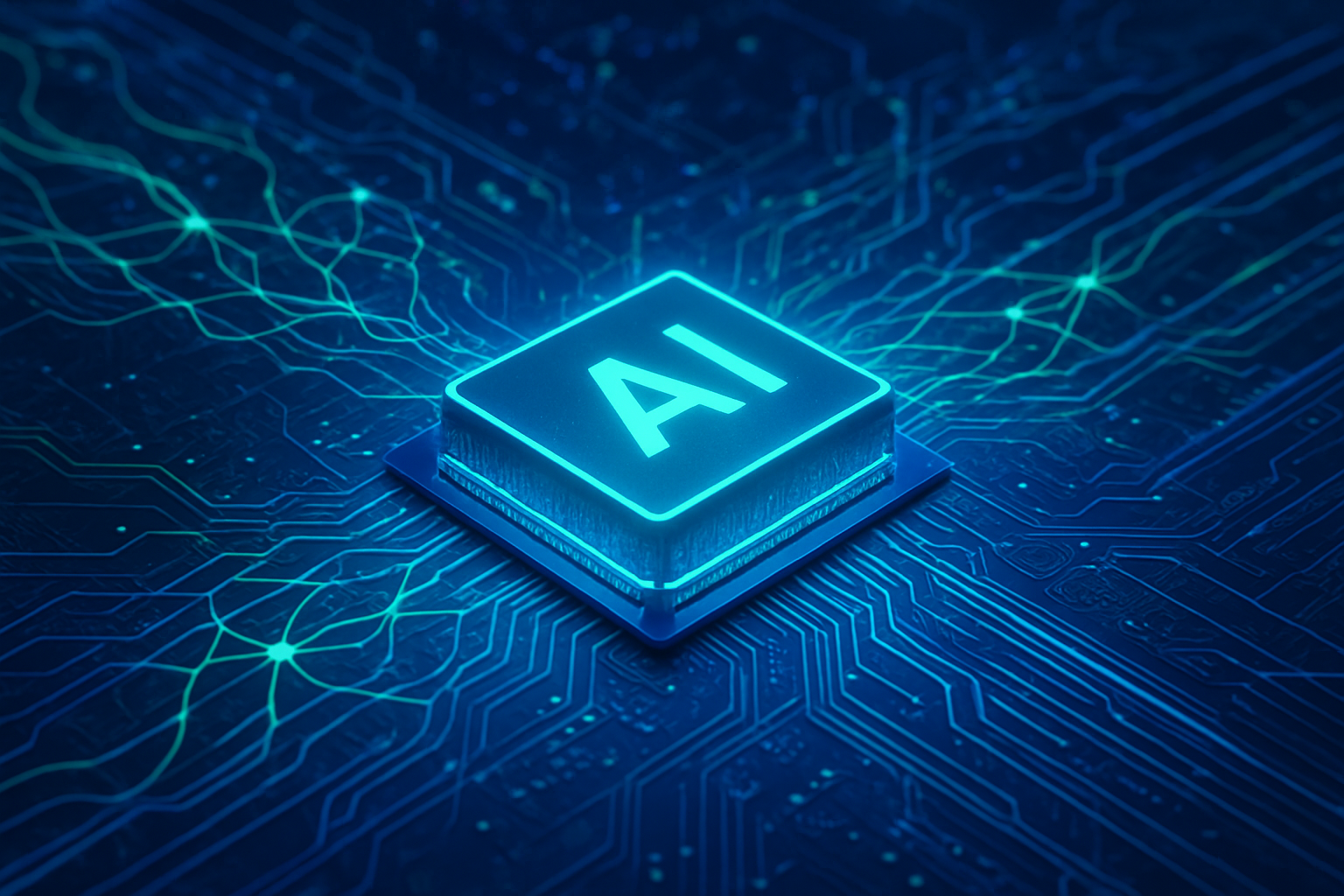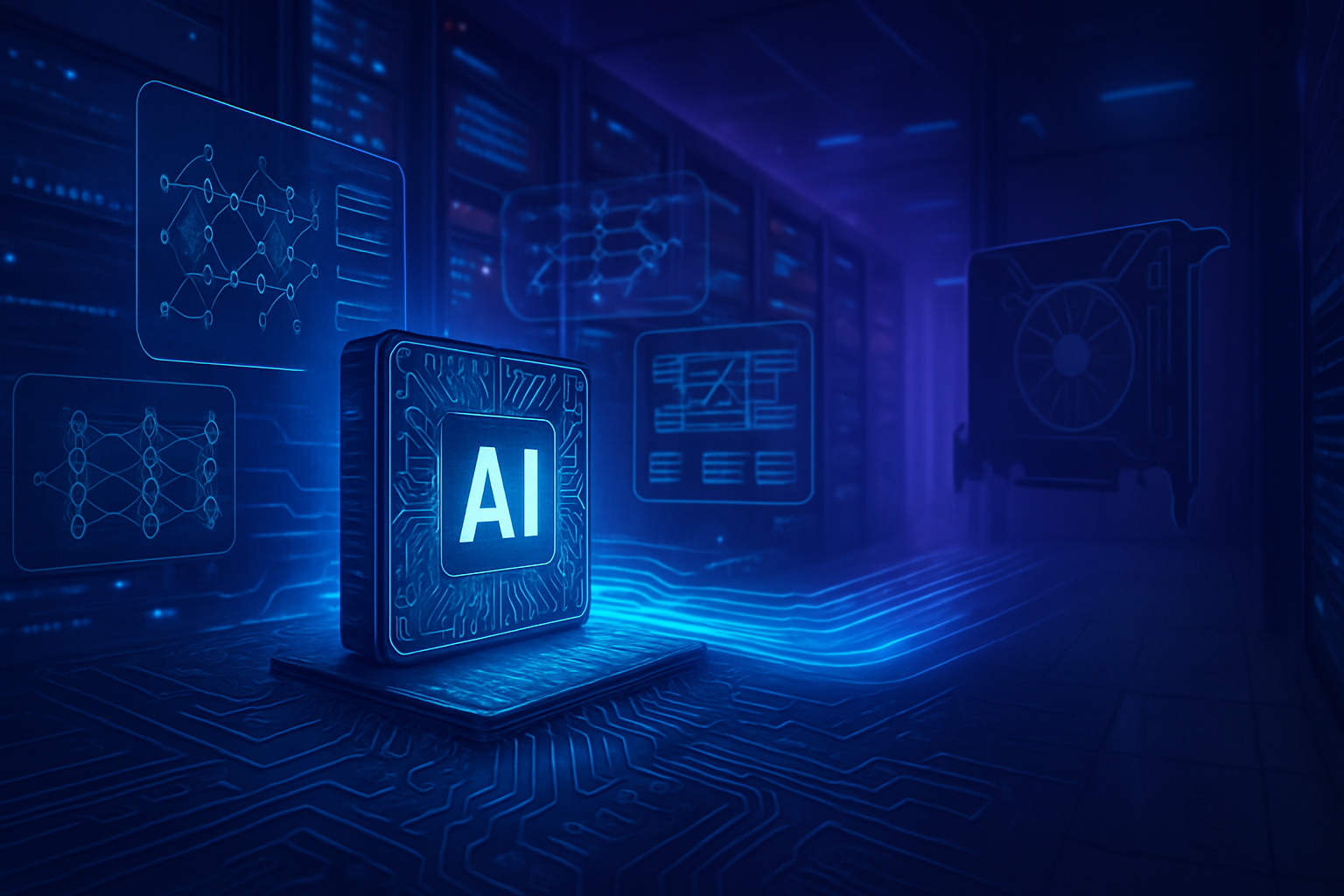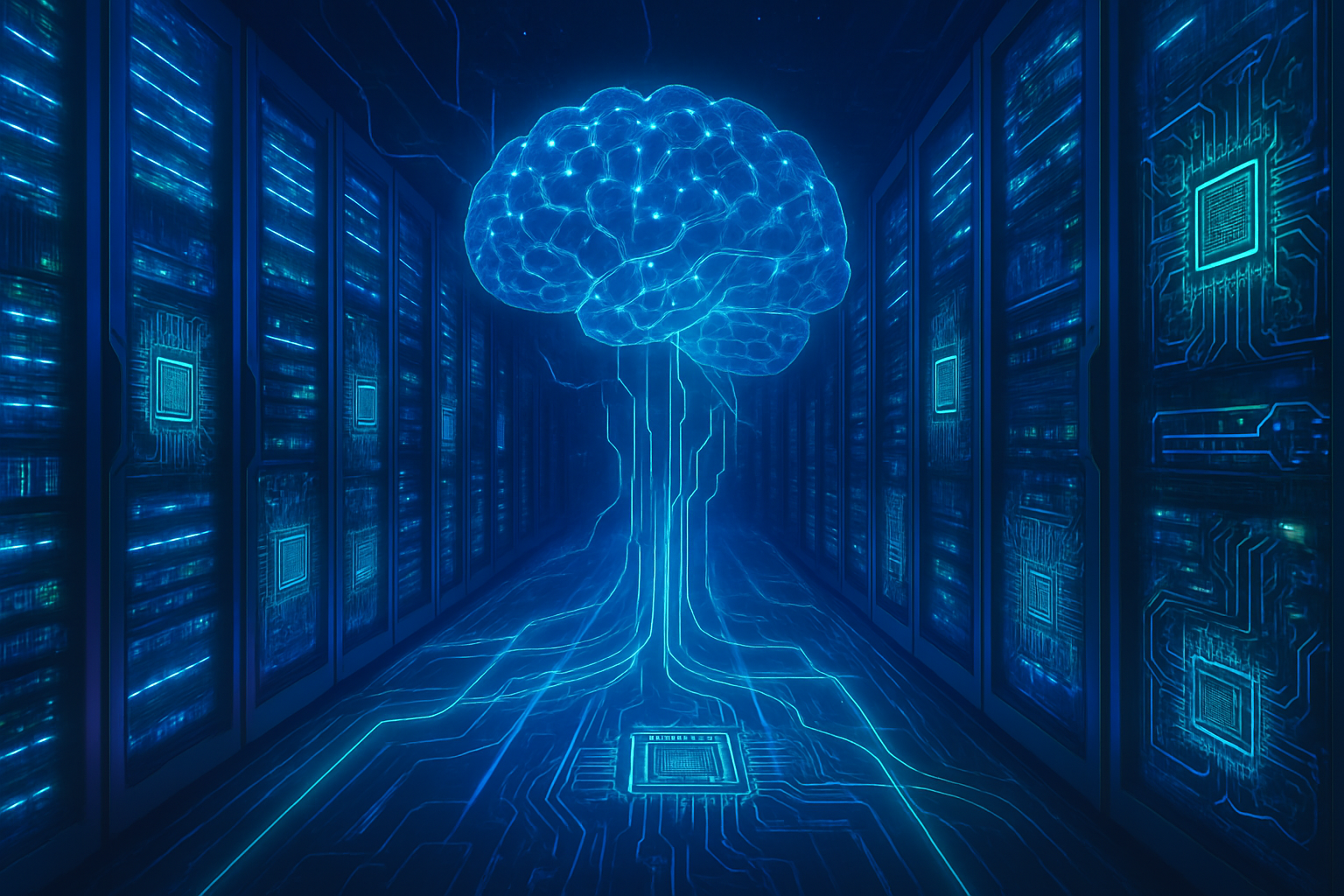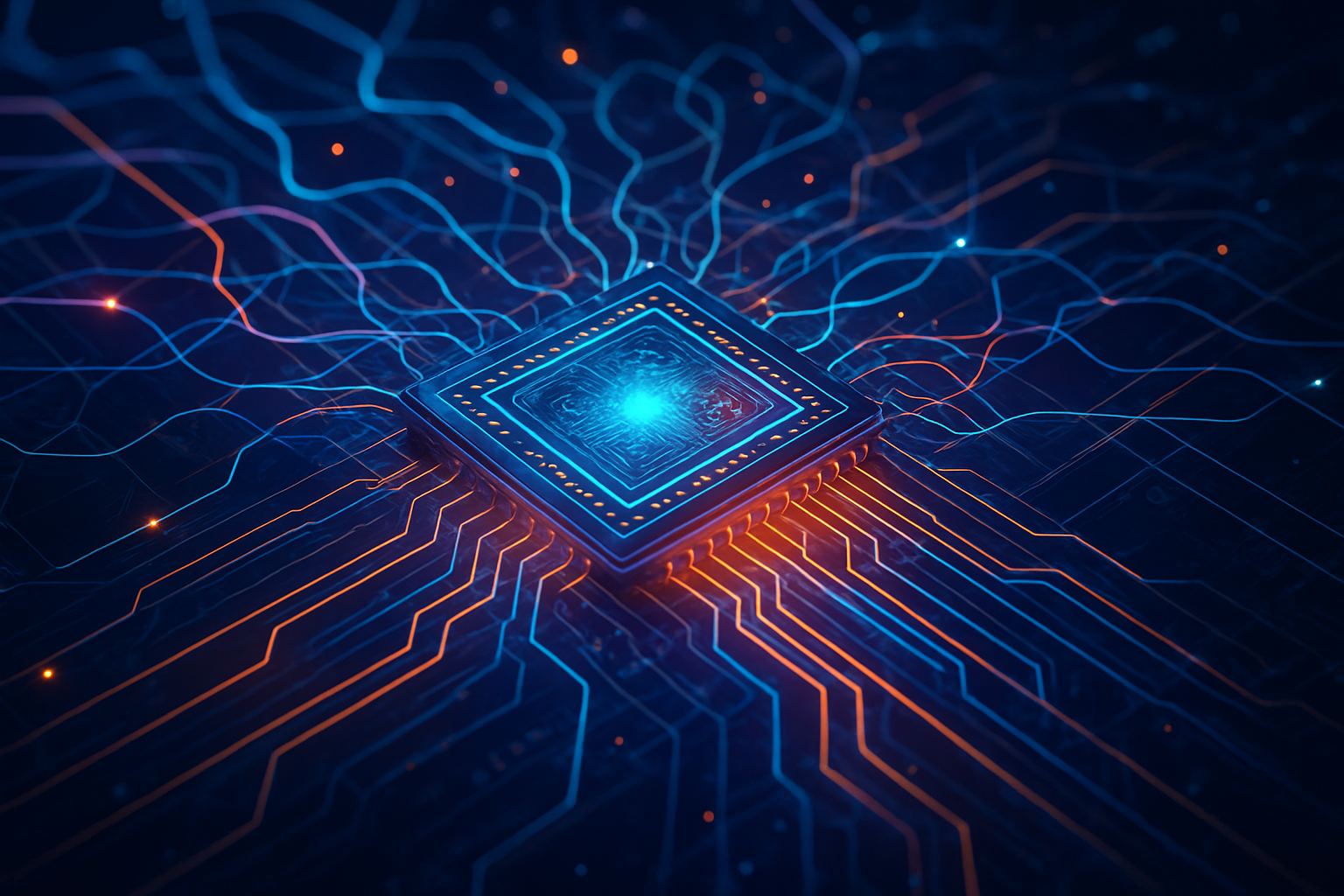The landscape of artificial intelligence is undergoing a profound and irreversible transformation as hyperscale cloud providers and major technology companies increasingly pivot to designing their own custom AI silicon. This strategic shift, driven by an insatiable demand for specialized compute power, cost optimization, and a quest for technological independence, is fundamentally reshaping the AI hardware industry and accelerating the pace of innovation. As of November 2025, this trend is not merely a technical curiosity but a defining characteristic of the AI Supercycle, challenging established market dynamics and setting the stage for a new era of vertically integrated AI development.
The Engineering Behind the AI Brain: A Technical Deep Dive into Custom Silicon
The custom AI silicon movement is characterized by highly specialized architectures meticulously crafted for the unique demands of machine learning workloads. Unlike general-purpose Graphics Processing Units (GPUs), these Application-Specific Integrated Circuits (ASICs) sacrifice broad flexibility for unparalleled efficiency and performance in targeted AI tasks.
Google's (NASDAQ: GOOGL) Tensor Processing Units (TPUs) have been pioneers in this domain, leveraging a systolic array architecture optimized for matrix multiplication – the bedrock of neural network computations. The latest iterations, such as TPU v6 (codename "Axion") and the inference-focused Ironwood TPUs, showcase remarkable advancements. Ironwood TPUs support 4,614 TFLOPS per chip with 192 GB of memory and 7.2 TB/s bandwidth, designed for massive-scale inference with low latency. Google's Trillium TPUs, expected in early 2025, are projected to deliver 2.8x better performance and 2.1x improved performance per watt compared to prior generations, assisted by Broadcom (NASDAQ: AVGO) in their design. These chips are tightly integrated with Google's custom Inter-Chip Interconnect (ICI) for massive scalability across pods of thousands of TPUs, offering significant performance per watt advantages over traditional GPUs.
Amazon Web Services (AWS) (NASDAQ: AMZN) has developed its own dual-pronged approach with Inferentia for AI inference and Trainium for AI model training. Inferentia2 offers up to four times higher throughput and ten times lower latency than its predecessor, supporting complex models like large language models (LLMs) and vision transformers. Trainium 2, generally available in November 2024, delivers up to four times the performance of the first generation, offering 30-40% better price-performance than current-generation GPU-based EC2 instances for certain training workloads. Each Trainium2 chip boasts 96 GB of memory, and scaled setups can provide 6 TB of RAM and 185 TBps of memory bandwidth, often exceeding NVIDIA (NASDAQ: NVDA) H100 GPU setups in memory bandwidth.
Microsoft (NASDAQ: MSFT) unveiled its Azure Maia 100 AI Accelerator and Azure Cobalt 100 CPU in November 2023. Built on TSMC's (NYSE: TSM) 5nm process, the Maia 100 features 105 billion transistors, optimized for generative AI and LLMs, supporting sub-8-bit data types for swift training and inference. Notably, it's Microsoft's first liquid-cooled server processor, housed in custom "sidekick" server racks for higher density and efficient cooling. The Cobalt 100, an Arm-based CPU with 128 cores, delivers up to a 40% performance increase and a 40% reduction in power consumption compared to previous Arm processors in Azure.
Meta Platforms (NASDAQ: META) has also invested in its Meta Training and Inference Accelerator (MTIA) chips. The MTIA 2i, an inference-focused chip presented in June 2025, reportedly offers 44% lower Total Cost of Ownership (TCO) than NVIDIA GPUs for deep learning recommendation models (DLRMs), which are crucial for Meta's ad servers. Further solidifying its commitment, Meta acquired the AI chip startup Rivos in late September 2025, gaining expertise in RISC-V-based AI inferencing chips, with commercial releases targeted for 2026.
These custom chips differ fundamentally from traditional GPUs like NVIDIA's H100 or the upcoming H200 and Blackwell series. While NVIDIA's GPUs are general-purpose parallel processors renowned for their versatility and robust CUDA software ecosystem, custom silicon is purpose-built for specific AI algorithms, offering superior performance per watt and cost efficiency for targeted workloads. For instance, TPUs can show 2–3x better performance per watt, with Ironwood TPUs being nearly 30x more efficient than the first generation. This specialization allows hyperscalers to "bend the AI economics cost curve," making large-scale AI operations more economically viable within their cloud environments.
Reshaping the AI Battleground: Competitive Dynamics and Strategic Advantages
The proliferation of custom AI silicon is creating a seismic shift in the competitive landscape, fundamentally altering the dynamics between tech giants, NVIDIA, and AI startups.
Major tech companies like Google, Amazon, Microsoft, and Meta stand to reap immense benefits. By designing their own chips, they gain unparalleled control over their entire AI stack, from hardware to software. This vertical integration allows for meticulous optimization of performance, significant reductions in operational costs (potentially cutting internal cloud costs by 20-30%), and a substantial decrease in reliance on external chip suppliers. This strategic independence mitigates supply chain risks, offers a distinct competitive edge in cloud services, and enables these companies to offer more advanced AI solutions tailored to their vast internal and external customer bases. The commitment of major AI players like Anthropic to utilize Google's TPUs and Amazon's Trainium chips underscores the growing trust and performance advantages perceived in these custom solutions.
NVIDIA, historically the undisputed monarch of the AI chip market with an estimated 70% to 95% market share, faces increasing pressure. While NVIDIA's powerful GPUs (e.g., H100, Blackwell, and the upcoming Rubin series by late 2026) and the pervasive CUDA software platform continue to dominate bleeding-edge AI model training, hyperscalers are actively eroding NVIDIA's dominance in the AI inference segment. The "NVIDIA tax"—the high cost associated with procuring their top-tier GPUs—is a primary motivator for hyperscalers to develop their own, more cost-efficient alternatives. This creates immense negotiating leverage for hyperscalers and puts downward pressure on NVIDIA's pricing power. The market is bifurcating: one segment served by NVIDIA's flexible GPUs for broad applications, and another, hyperscaler-focused segment leveraging custom ASICs for specific, large-scale deployments. NVIDIA is responding by innovating continuously and expanding into areas like software licensing and "AI factories," but the competitive landscape is undeniably intensifying.
For AI startups, the impact is mixed. On one hand, the high development costs and long lead times for custom silicon create significant barriers to entry, potentially centralizing AI power among a few well-resourced tech giants. This could lead to an "Elite AI Tier" where access to cutting-edge compute is restricted, potentially stifling innovation from smaller players. On the other hand, opportunities exist for startups specializing in niche hardware for ultra-efficient edge AI (e.g., Hailo, Mythic), or by developing optimized AI software that can run effectively across various hardware architectures, including the proprietary cloud silicon offered by hyperscalers. Strategic partnerships and substantial funding will be crucial for startups to navigate this evolving hardware-centric AI environment.
The Broader Canvas: Wider Significance and Societal Implications
The rise of custom AI silicon is more than just a hardware trend; it's a fundamental re-architecture of AI infrastructure with profound wider significance for the entire AI landscape and society. This development fits squarely into the "AI Supercycle," where the escalating computational demands of generative AI and large language models are driving an unprecedented push for specialized, efficient hardware.
This shift represents a critical move towards specialization and heterogeneous architectures, where systems combine CPUs, GPUs, and custom accelerators to handle diverse AI tasks more efficiently. It's also a key enabler for the expansion of Edge AI, pushing processing power closer to data sources in devices like autonomous vehicles and IoT sensors, enhancing real-time capabilities, privacy, and reducing cloud dependency. Crucially, it signifies a concerted effort by tech giants to reduce their reliance on third-party vendors, gaining greater control over their supply chains and managing escalating costs. With AI workloads consuming immense energy, the focus on sustainability-first design in custom silicon is paramount for managing the environmental footprint of AI.
The impacts on AI development and deployment are transformative: custom chips offer unparalleled performance optimization, dramatically reducing training times and inference latency. This translates to significant cost reductions in the long run, making high-volume AI use cases economically viable. Ownership of the hardware-software stack fosters enhanced innovation and differentiation, allowing companies to tailor technology precisely to their needs. Furthermore, custom silicon is foundational for future AI breakthroughs, particularly in AI reasoning—the ability for models to analyze, plan, and solve complex problems beyond mere pattern matching.
However, this trend is not without its concerns. The astronomical development costs of custom chips could lead to centralization and monopoly power, concentrating cutting-edge AI development among a few organizations and creating an accessibility gap for smaller players. While reducing reliance on specific GPU vendors, the dependence on a few advanced foundries like TSMC for fabrication creates new supply chain vulnerabilities. The proprietary nature of some custom silicon could lead to vendor lock-in and opaque AI systems, raising ethical questions around bias, privacy, and accountability. A diverse ecosystem of specialized chips could also lead to hardware fragmentation, complicating interoperability.
Historically, this shift is as significant as the advent of deep learning or the development of powerful GPUs for parallel processing. It marks a transition where AI is not just facilitated by hardware but actively co-creates its own foundational infrastructure, with AI-driven tools increasingly assisting in chip design. This moves beyond traditional scaling limits, leveraging AI-driven innovation, advanced packaging, and heterogeneous computing to achieve continued performance gains, distinguishing the current boom from past "AI Winters."
The Horizon Beckons: Future Developments and Expert Predictions
The trajectory of custom AI silicon points towards a future of hyper-specialized, incredibly efficient, and AI-designed hardware.
In the near-term (2025-2026), expect an intensified focus on edge computing chips, enabling AI to run efficiently on devices with limited power. The strengthening of open-source software stacks and hardware platforms like RISC-V is anticipated, democratizing access to specialized chips. Advancements in memory technologies, particularly HBM4, are crucial for handling ever-growing datasets. AI itself will play a greater role in chip design, with "ChipGPT"-like tools automating complex tasks from layout generation to simulation.
Long-term (3+ years), radical architectural shifts are expected. Neuromorphic computing, mimicking the human brain, promises dramatically lower power consumption for AI tasks, potentially powering 30% of edge AI devices by 2030. Quantum computing, though nascent, could revolutionize AI processing by drastically reducing training times. Silicon photonics will enhance speed and energy efficiency by using light for data transmission. Advanced packaging techniques like 3D chip stacking and chiplet architectures will become standard, boosting density and power efficiency. Ultimately, experts predict a pervasive integration of AI hardware into daily life, with computing becoming inherently intelligent at every level.
These developments will unlock a vast array of applications: from real-time processing in autonomous systems and edge AI devices to powering the next generation of large language models in data centers. Custom silicon will accelerate scientific discovery, drug development, and complex simulations, alongside enabling more sophisticated forms of Artificial General Intelligence (AGI) and entirely new computing paradigms.
However, significant challenges remain. The high development costs and long design lifecycles for custom chips pose substantial barriers. Energy consumption and heat dissipation require more efficient hardware and advanced cooling solutions. Hardware fragmentation demands robust software ecosystems for interoperability. The scarcity of skilled talent in both AI and semiconductor design is a pressing concern. Chips are also approaching their physical limits, necessitating a "materials-driven shift" to novel materials. Finally, supply chain dependencies and geopolitical risks continue to be critical considerations.
Experts predict a sustained "AI Supercycle," with hardware innovation as critical as algorithmic breakthroughs. A more diverse and specialized AI hardware landscape is inevitable, moving beyond general-purpose GPUs to custom silicon for specific domains. The intense push by major tech giants towards in-house custom silicon will continue, aiming to reduce reliance on third-party suppliers and optimize their unique cloud services. Hardware-software co-design will be paramount, and AI will increasingly be used to design the next generation of AI chips. The global AI hardware market is projected for substantial growth, with a strong focus on energy efficiency and governments viewing compute as strategic infrastructure.
The Unfolding Narrative: A Comprehensive Wrap-up
The rise of custom AI silicon by hyperscalers and major tech companies represents a pivotal moment in AI history. It signifies a fundamental re-architecture of AI infrastructure, driven by an insatiable demand for specialized compute power, cost efficiency, and strategic independence. This shift has propelled AI from merely a computational tool to an active architect of its own foundational technology.
The key takeaways underscore increased specialization, the dominance of hyperscalers in chip design, the strategic importance of hardware, and a relentless pursuit of energy efficiency. This movement is not just pushing the boundaries of Moore's Law but is creating an "AI Supercycle" where AI's demands fuel chip innovation, which in turn enables more sophisticated AI. The long-term impact points towards ubiquitous AI, with AI itself designing future hardware, advanced architectures, and potentially a "split internet" scenario where an "Elite AI Tier" operates on proprietary custom silicon.
In the coming weeks and months (as of November 2025), watch closely for further announcements from major hyperscalers regarding their latest custom silicon rollouts. Google is launching its seventh-generation Ironwood TPUs and new instances for its Arm-based Axion CPUs. Amazon's CEO Andy Jassy has hinted at significant announcements regarding the enhanced Trainium3 chip at AWS re:Invent 2025, focusing on secure AI agents and inference capabilities. Monitor NVIDIA's strategic responses, including developments in its Blackwell architecture and Project Digits, as well as the continued, albeit diversified, orders from hyperscalers. Keep an eye on advancements in high-bandwidth memory (HBM4) and the increasing focus on inference-optimized hardware. Observe the aggressive capital expenditure commitments from tech giants like Alphabet (NASDAQ: GOOGL) and Amazon (NASDAQ: AMZN), signaling massive ongoing investments in AI infrastructure. Track new partnerships, such as Broadcom's (NASDAQ: AVGO) collaboration with OpenAI for custom AI chips by 2026, and the geopolitical dynamics affecting the global semiconductor supply chain. The unfolding narrative of custom AI silicon will undoubtedly define the next chapter of AI innovation.
This content is intended for informational purposes only and represents analysis of current AI developments.
TokenRing AI delivers enterprise-grade solutions for multi-agent AI workflow orchestration, AI-powered development tools, and seamless remote collaboration platforms.
For more information, visit https://www.tokenring.ai/.
